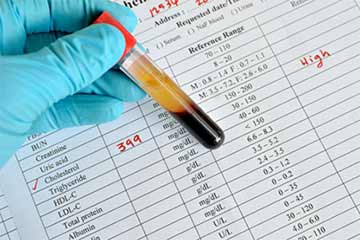What is intrauterine insemination?
Intrauterine insemination (IUI) involves a laboratory procedure to separate fast moving sperm from more sluggish or non-moving sperm.
The fast moving sperm are then placed into the woman’s womb close to the time of ovulation when the egg is released from the ovary in the middle of the monthly cycle.
Is IUI for me?
Your clinic may recommend IUI if:
- There is unexplained infertility
- There are ovulation problems
- The male partner experiences impotence or premature ejaculation
- You do not have any known fertility problems but may not have a male partner and are trying for a baby using donated sperm.
Patency health tests
It is essential that your fallopian tubes are known to be open and healthy before the IUI process begins. A tubal patency test is usually carried out as part of your assessment by the fertility clinic.
The typical method for assessing the health of your pelvis and the patency of your fallopian tubes is laparoscopy and dye testing.
At laparoscopy a direct view of the pelvis is obtained by inserting a telescope into the abdomen.
When the pelvis and tubes are healthy, dye passes freely through both tubes. There should be no adhesions present that might prevent an egg from having access to either tube from the ovaries. This is performed under a short general anaesthetic.
The test may show that you only have one open healthy tube although you may have both ovaries. IUI treatment can then only be carried out when there is evidence that ovulation is about to occur from the ovary that is on the same side as the open tube.
The second essential requirement is that there is no significant problem with sperm numbers or sperm quality.
Intrauterine insemination options
If your clinic has recommended IUI treatment, you may want to discuss the following options with your clinician:
IUI with or without fertility drugs – as IUI can be given with or without fertility drugs to boost egg production, you should discuss the risks involved in using fertility drugs and whether IUI without fertility drugs might be suitable for you.
- Risks of fertility treatment
IUI with partner’s sperm or donor sperm – instead of using your partner’s sperm, if your partner is unable to provide sperm, or if you do not have a male partner, you may want to consider using donated sperm.
If IUI is unsuccessful – you may want to talk to your clinician about other procedures such as in vitro fertilisation (IVF).
- In vitro fertilisation (IVF)
How does Intrauterine insemination work?
For women:
Step 1. If you are not using fertility drugs IUI is done between day 12 and day 16 of your monthly cycle – with day one being the first day of your period. You are given blood or urine tests to identify when you are about to ovulate.
Many clinics will provide you with an ovulation predictor kit to detect the hormone surge that signals imminent ovulation.
- or -
If you use fertility drugs to stimulate ovulation, vaginal ultrasound scans are used to track the development of your eggs. As soon as an egg is mature, you are given a hormone injection to stimulate its release.
- Fertility drugs
Step 2. The sperm are inserted 36 to 40 hours later. To do this, the doctor first
inserts a speculum (a special instrument that keeps your vaginal walls apart) into your vagina (as for a cervical smear test).
The sperm are inserted 36 to 40 hours later. To do this, the doctor first inserts a speculum (a special instrument that keeps your vaginal walls apart) into your vagina (as for a cervical smear test).
A small catheter (a soft, flexible tube) is then threaded into your womb via your cervix. The best quality sperm are selected and inserted through the catheter.
The whole process takes just a few minutes and is usually a painless procedure but some women may experience a temporary, menstrual-like cramping.
Step 3. You may wish to rest for a short time before going home – ask your clinic what they recommend.
For men:
Step 1. You will be asked to produce a sperm sample on the day the treatment takes place.
Step 2. The sperm are washed to remove the fluid surrounding them and the rapidly moving sperm separated out.
Step 3. The rapidly moving sperm are placed in a small catheter (tube) to be inserted into the womb.
Source
What is intrauterine insemination (IUI) and how does it work?
HFEA
GeoSalud, Updated: march 10, 2018






